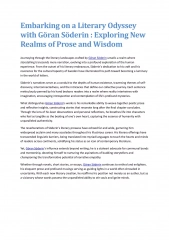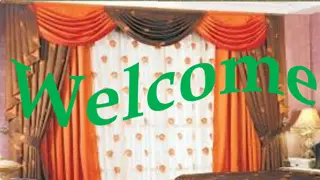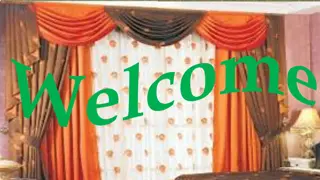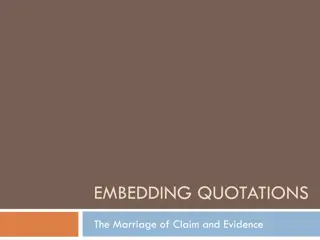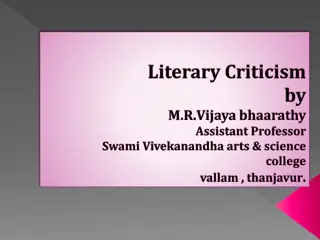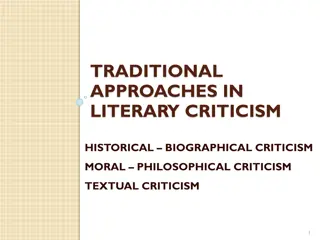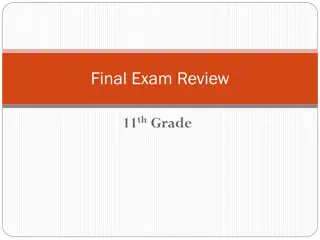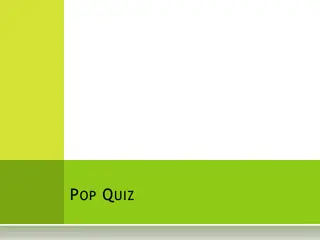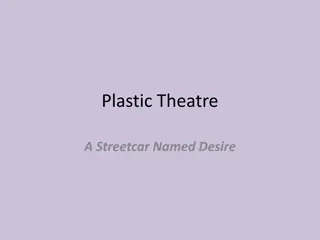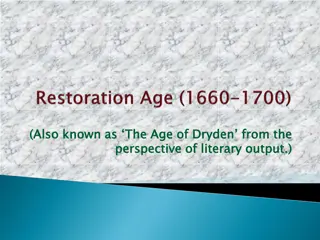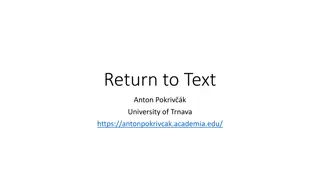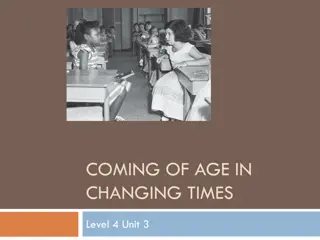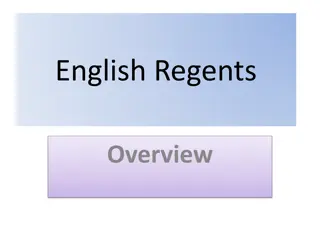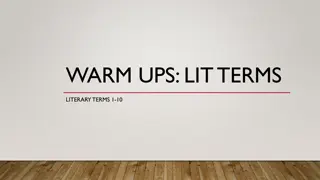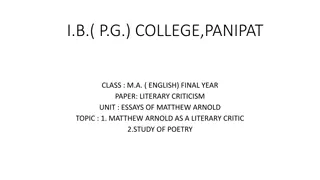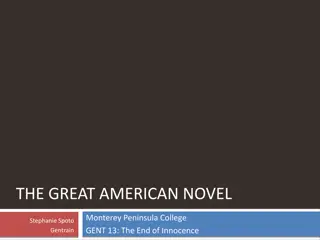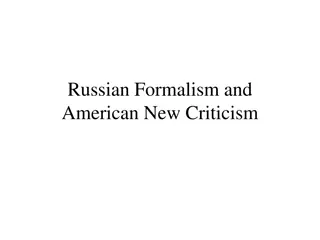
Crafting a Compelling Story: Elements and Techniques
Delve into the essential elements of a well-structured story, from the exposition to the denouement. Explore the significance of setting, point of view, character types, characterization, and various conflicts that can drive a narrative forward. Understand how these components come together to create a captivating and engaging plot.
Download Presentation

Please find below an Image/Link to download the presentation.
The content on the website is provided AS IS for your information and personal use only. It may not be sold, licensed, or shared on other websites without obtaining consent from the author. If you encounter any issues during the download, it is possible that the publisher has removed the file from their server.
You are allowed to download the files provided on this website for personal or commercial use, subject to the condition that they are used lawfully. All files are the property of their respective owners.
The content on the website is provided AS IS for your information and personal use only. It may not be sold, licensed, or shared on other websites without obtaining consent from the author.
E N D
Presentation Transcript
Plot The sequential events that make up a story Exposition- introduces important background info (setting, events occurring before the main plot, characters' back stories, etc.) Incident incident - an event that jolts your hero out of his everyday routine; it is the event which sparks the fuse of your plot Rising Action - the series of events that begin immediately after the exposition and builds up to the climax. Climax - The climax is the turning point; a decisive moment that is of maximum intensity or is a major turning point in a plot. Inciting Falling Action The conflict unravels with the protagonist winning or losing against the antagonist Resolution/Denouement Conflicts are resolved, creating normality for the characters and a sense of catharsis or release of tension and anxiety, for the reader; the final scene(s).
Setting Setting Place and Time Where and When the story takes place May be more than one place/time Used to create Mood.
Point of View POV Who/What is telling the story? Questions to ask: Is the narrator a character in the story? If Yes 1st Person If No 3rd Person - How Reliable? - How omniscient? (Bias, Psychology, Vanity, Child) Observer Narrator sees actions and hears speech (Fly on the wall) Limited Omniscient sees and hears, but also knows thoughts and feelings of one character of Omniscient knows the thoughts and feelings more than one character
Character Types Dynamic One who changes over time, usually as a result of resolving a central conflict Static One who does not change over time; No transformation or evolution Round Anyone who has a complex personality; often portrayed as a conflicted person Flat Has only one kind of personality trait; always the same Stock Characters vs. Protagonist vs. Antagonist
Characterization Characterization How the author describes their characters 4 methods of Characterization: 1. Direct Explanation 2. Physical Description Direct Characterization 1. 2. Dialogue Thoughts, actions, and feelings Indirect Characterization
Conflict Man vs. Man Good Guy vs. Bad Guy Man vs. Nature Struggles with a force of nature; trying to survive Man vs. Society fight against social traditions or rules; Society can become a character of its own; often used as commentary on real society Man vs. Self Struggle takes place in his/her own mind; choosing between right and wrong; overcoming emotions Other types of Conflict my include: Man vs. Fate, Man vs. Supernatural , & Man vs. Technology
Symbolism Symbol An object/person representing a deeper idea or concept A symbol can have shifting meanings, so it depends on the context in which it is used Examples: Dove = peace Black = Evil/Death Chain = union or imprisonment Spring = new life, birth Light vs. Dark Bridge = Change Water = Spiritual birth/baptism Forest = evil, lost, fear, unruly
Style Style The manner in which an author chooses to write to his or her audience. One easy way to understand literary style is to think about fashion styles. Clothes can be formal and dressy, informal and casual, preppy, athletic, and so forth. Literary style is like the clothes that a text puts on. Original ---"No sich uh thing!" Tea Cake retorted. (Zora Neale Hurston. Their Eyes Were Watching God. Urbana: U of Illinois P, 1978, p. 205.) Informal ---"Nothing like that ever happened," Tea Cake replied. Formal ---"With great fortune, that happenstance did not become a reality," Tea Cake stated. Journalistic/Everyday---"It did not happen," Tea Cake said. Archaic---"Verily, it was a circumstance, to be noted, that appeared not to so much have been a reality as to have evolved as a thing that had not yet come to be," Tea Cake impelled.
Diction and Tone Dictionis word choice. When writing, authors use vocabulary suited for the purpose of his/her piece and the audience they are writing for. Formal Diction are not angry Casual DictionSlang (very informal) aren't mad ain't ticked Also be aware of connotations with different word choice Positive Negative -pruning the bushes -slashing at the bushes -the politician's stance -the politician's spin
Tone Tone is an attitude of a writer toward a subject or an audience. objective or subjective, logical or emotional, intimate or distant, serious or humorous. The Catcher in the Rye Example. All morons hate it when you call them a moron. If a girl looks swell when she meets you, who gives a damn if she s late? Nobody. Catholics are always trying to find out if you re Catholic. -----Holden s tone is bitterly sarcastic as he criticizes the nature of things in real life.
Mood Mood is evokes certain feelings or vibes in readers through words and descriptions. Atmosphere of a literary piece; it creates an emotional situation that surrounds the readers. Mood can be developed through setting, theme, tone, and diction. It evokes various emotional responses in readers, ensuring their emotional attachment to the literary piece they read.
Figurative Language Metaphor A comparison made between two objects Simile A comparison using like or as Analogy A more extensive/elaborate comparison Ex: Structure of an atom is like a solar system. Nucleus is the sun and electrons are the planets revolving around their sun. Simile and Metaphors help create the over arching analogy.
Theme Theme A main idea or an underlying meaning of a literary work that may be stated directly or indirectly. Not just a subject, but a statement about it. A thought or idea about a certain topic. A theme statement should be a complete sentence Ex: Love and Death vs. It is better to have loved and lost than never to have loved at all

